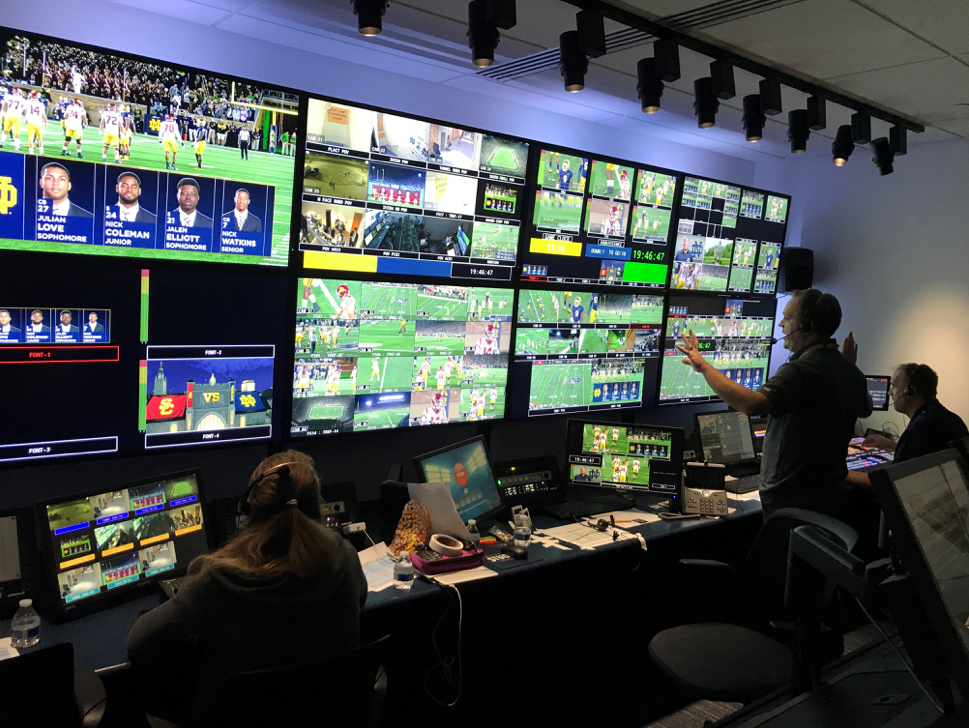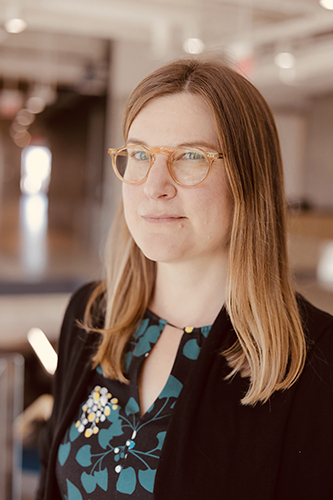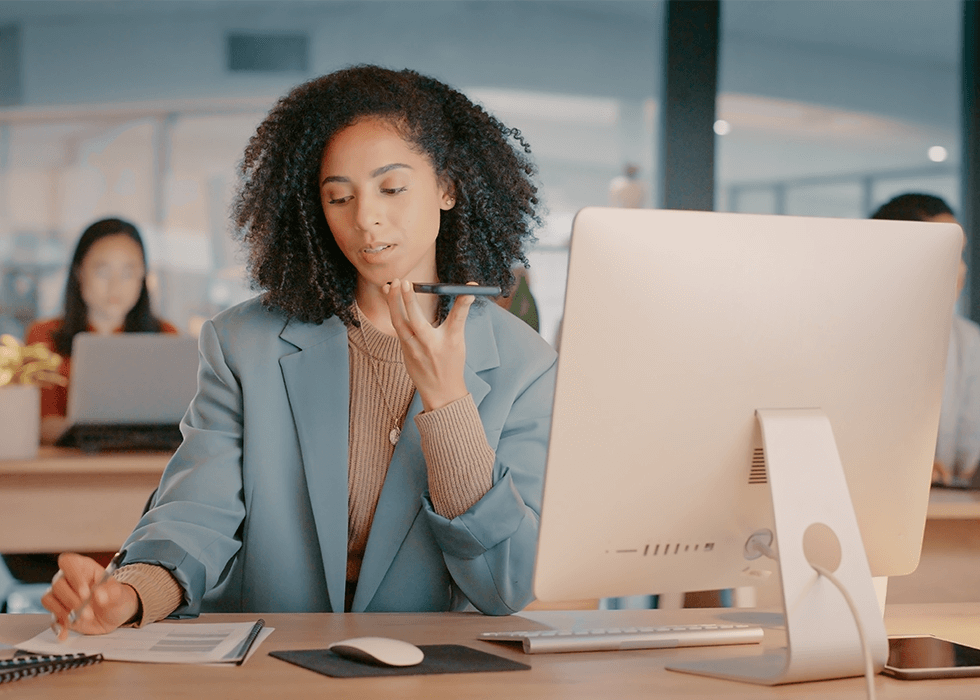Notre Dame Enrolls IP Flexibility for the Modern Media Era
by Kirsten Nelson
Firmly established in the league of historic academic and athletic icons, Notre Dame University also enjoys the coveted modern-era distinction of breaking new ground with cross-platform content creation. The venerable institution has extended its educational and faith-based missions with the production and delivery of top-notch media assets across a multitude of outlets.

Worldwide, a passionate fanbase devours the compelling athletic storytelling of Fighting Irish Media, which has evolved in tandem with major sports networks’ demands for ever more regional content. Academically, the university fosters dynamic multimedia development with its Office for Digital Learning. Threaded throughout these offerings and extending outward to new channels is Notre Dame’s commitment to delivering compelling religious content via Catholic Media and the Grotto Network.
These multifaceted efforts result in terabytes of media moving between production facilities, sports venues, performing arts halls, and classrooms across campus and beyond, a feat made possible by Notre Dame’s fiber-rich infrastructure and advanced studios and control rooms. To keep the pace of technology on par with growing demands for media creation and delivery across an expanding list of university departments and programs, the institution launched a foundational technical revamp as part of its Campus Crossroads development project.
“The vision was always to create a centralized hub of media production that would support the entire campus,” described Scott Rinehart, Director of Broadcast Technology with Notre Dame. “The challenge was to make that facility as flexible as possible. The rate of change in technology is happening at such a rapid rate, you can’t buy a one-trick-pony facility anymore. You have to be able to take things out and plug new things in easily.”
The result, painstakingly integrated by BeckTV based on a WJHW design, is the completely unique, entirely IP-based 18,000-square-foot Rex and Alice A. Martin Media Center. One of only a very few completely IP-based media facilities in the world when it opened in the fall of 2017, it now serves as the hub, backbone, and asset storage master entity for a campus with global media reach.
It was designed as something akin to a remote production facility for the entire campus, with all the production, recording and distribution resources housed in one location. For reasons of production proximity for arguably its biggest show, which happens every Saturday during football season, the Martin Media Center is housed in the new Corbett Family Hall on the east side of Notre Dame Stadium. But the architecture of the center’s setup goes far beyond that required in an athletics-only scenario.
Serving as headquarters for Notre Dame Studios, the new production facility supports a wide variety of live and/or recorded events and storytelling. It’s also home to an academic innovation center for emerging media technologies.
The Martin Media Center includes one large studio, one teaching studio, two nine-position production control rooms, two audio control rooms, a camera shading room, a slow-motion replay room, and eight fiber-connected editing suites. An Evertz EXE IP video/audio router at the system core connects spaces in the media center to three additional control rooms and one studio located in the nearby Joyce Center. As a result, the university can use any one of five control rooms as a remote production room for any venue on campus equipped with fiber connectivity.
“This is a new way of thinking about things,” said Nima Malekmanesh, Product Marketing Manager and Senior Engineer with Evertz. Noting that Notre Dame’s is also one of the first implementations of uncompressed content over IP, he described the university’s new capabilities. “Evertz’ IP platform allows you build up your resources and allocate according to different needs. With Notre Dame, the most extreme case is with football, when they use majority of their resources. But during the week for smaller events, you won’t need all those inputs and outputs. Then you can split up resources on demand, and scale your show to maximize your resources. It provides a lot of flexibility.”
A few months since the facility opened, the various Martin Media Center stakeholders are constantly discovering new use-cases. What’s more, faculty and staff from other departments have seen surprising new possibilities. Rinehart expects the revelations to continue, especially because the multi-faceted new media core naturally lends itself toward interdisciplinary efforts. “I look forward to talking to the College of Engineering, the Computer Science department about all this technology we have and building a curriculum around it,” he said. “It’s another opportunity for us to meet our educational mission as a university, providing real-world skills and new ways to understand concepts. It’s not just book learning anymore. It will be happening with the real equipment.”
New ideas will likely come from the students themselves as they gain more time with the technology. “When you think about it, every four to five years we have complete turnover in the student population,” Rinehart observed. “Those new kids are bringing in all sorts of new ideas and devices.”
IP offers longevity there, too. Rinehart noted that where traditionally a production facility would be looking at five to six years between upgrades as equipment becomes obsolete, with IP Notre Dame may be looking at the 10- to 15-year range, with the IP backbone making adjustments to the system much easier.
Malekmanesh elaborated on this point: “IP allows you to adapt to change. Let’s say you built the system now for HD, and the goal next year is to go to 3G, then probably HDR or 4K. IP allows you to accommodate those upgrades a lot easier.”
The evolution will definitely be continuous, especially as Notre Dame discovers “how we take this system and provide services to all of campus,” Rinehart said. “The fun part is we don’t know the answers yet. Whatever somebody wants we can pretty well deliver it. We’ve built this incredible engine. We have a Ferrari right now, and now the only question is where are we going to drive it. That’s for the users to tell us. How do we take advantage of this tremendous investment the university has blessed us with.”






